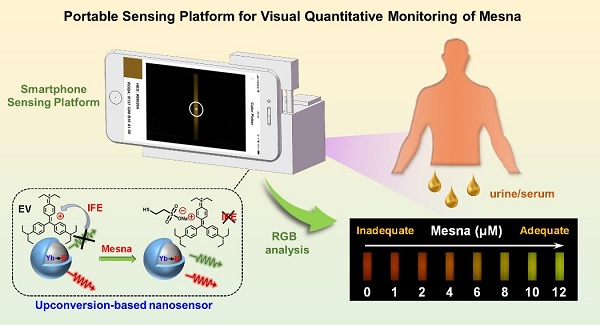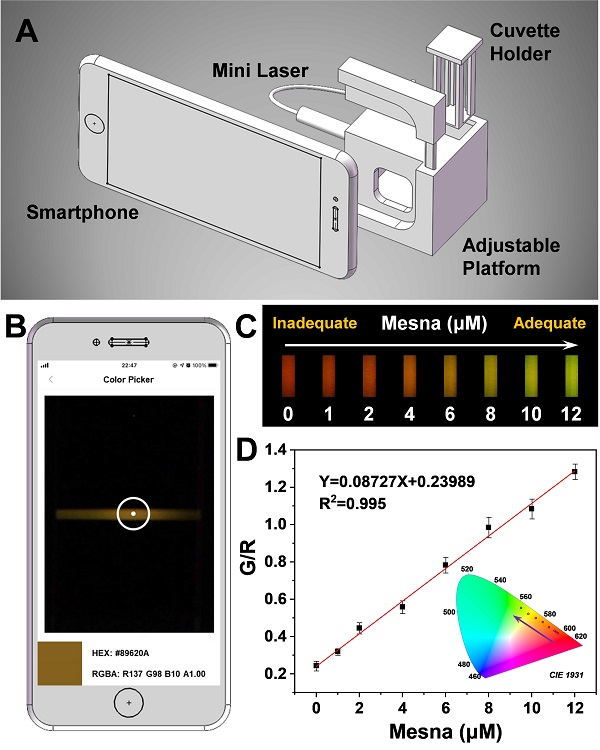To solve this problem, a research team led by Prof. JIANG Changlong from the Hefei Institutes of Physical Science (HFIPS) of the Chinese Academy of Sciences (CAS) has recently proposed a new method for visual detection of mesna. Results were published in Analytical Chemistry.
In this study, the researchers monitored quantitative mesna visually in real-time conditions with a newly-developed portable sensing platform featuring upconversion-based nanosensor.
The nanosensor was constructed by upconversion nanoparticles (UCNPs) and ethyl violet (EV), in which the UCNPs acted as donors and EV as the quencher.
The addition of mesna caused the variations of fluorescent and colorimetric chromaticity, realizing the dual-readout function of the nanosensor. Benefiting from the near infrared ray excited upconversion luminescence, the background interference of biological samples was eliminated and effectively improved the sensitivity of the detection. The low limit of detection (LOD) of the nanosensor was as low as 26 and 48 nM for the fluorescence and colorimetric signals, respectively.

Figure 1. Portable sensing platform for visual quantitative monitoring of mesna.
In addition, a highly compatible portable sensing platform was designed for facile detection of mesna with the LOD of 56 nM. The nano-sensor has good selectivity and anti-interference ability, and shows good reliability in actual sample detection.

Figure 2. RGB analysis of upconversion luminescence using a smartphone.
The platform can be developed as point-of-care testing application for real-time monitoring of mesna levels to guide dose adjustments and therapeutic efficacy. It provides a simple and reliable strategy for clinical drug monitoring and exhibits potential application prospect.
Read the original article on Chinese Academy of Sciences (CAS).







